MP Board Solutions for Class 10 Science Chapter 10 – The Human Eye and the Colourful World
MP Board Solutions for Class 10 Science Chapter 10 – The Human Eye and the Colourful World are essential for understanding key Physics concepts in the MPBSE curriculum. These well-structured answers help students grasp topics like structure of the human eye, defects of vision, and phenomena like dispersion and scattering of light. Designed as per the latest syllabus, these solutions strengthen conceptual clarity and improve exam preparation. Ideal for revision and practice, they encourage logical thinking and scientific understanding, making them a valuable study tool for scoring well in Class 10 Science exams.
MP Board Solutions For Class 10 Science – The Human Eye and the Colourful World – Exercise Images
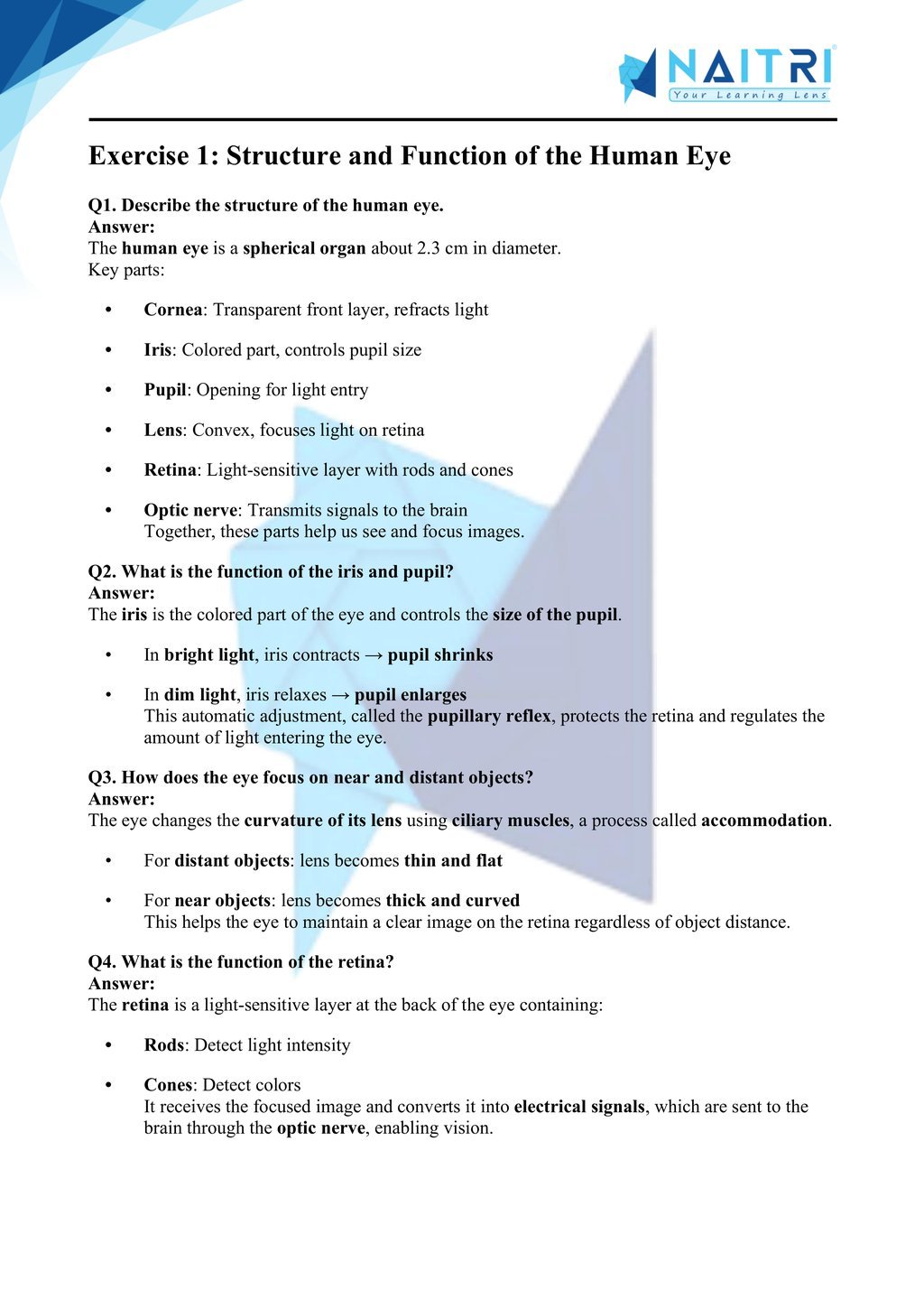
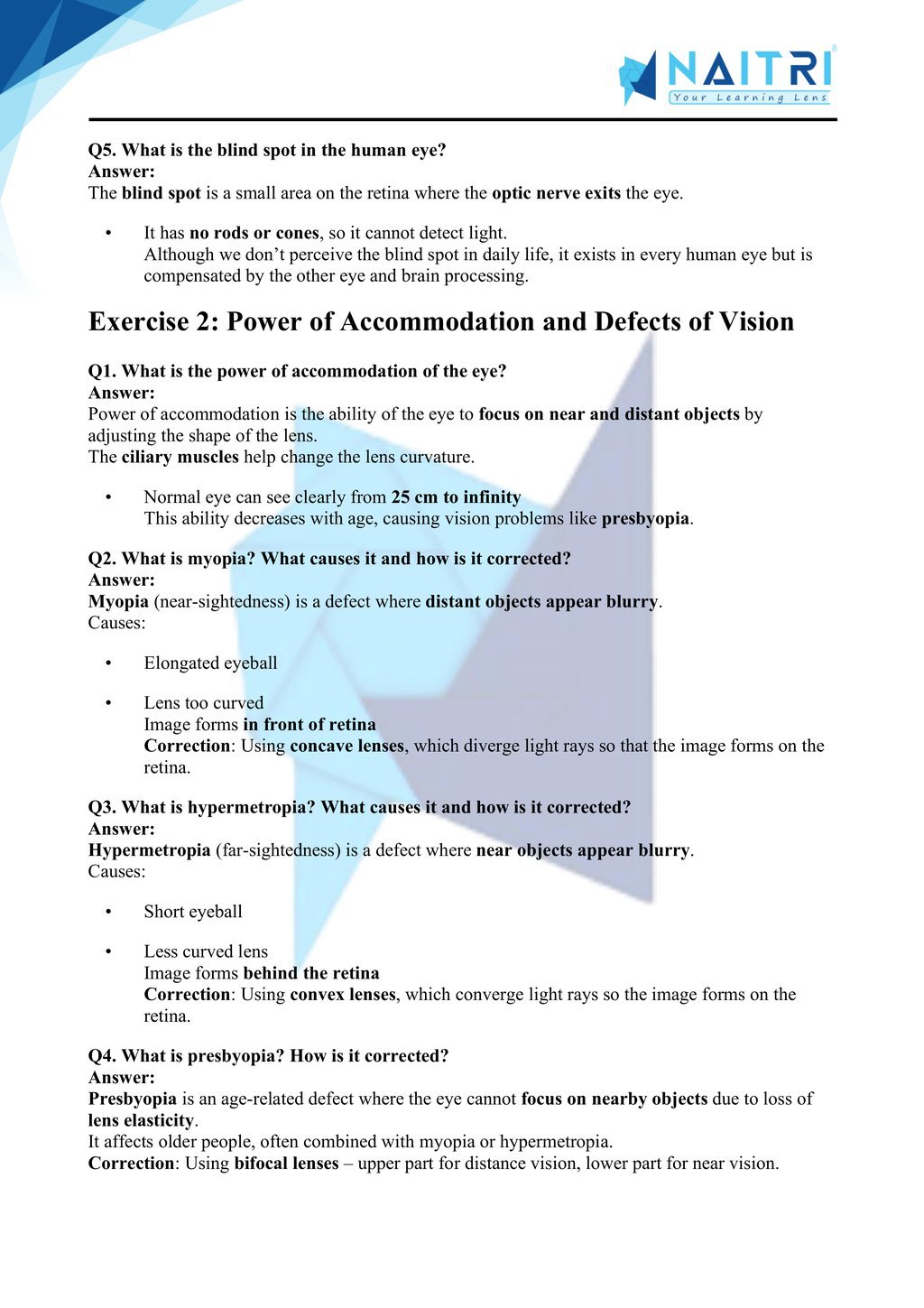
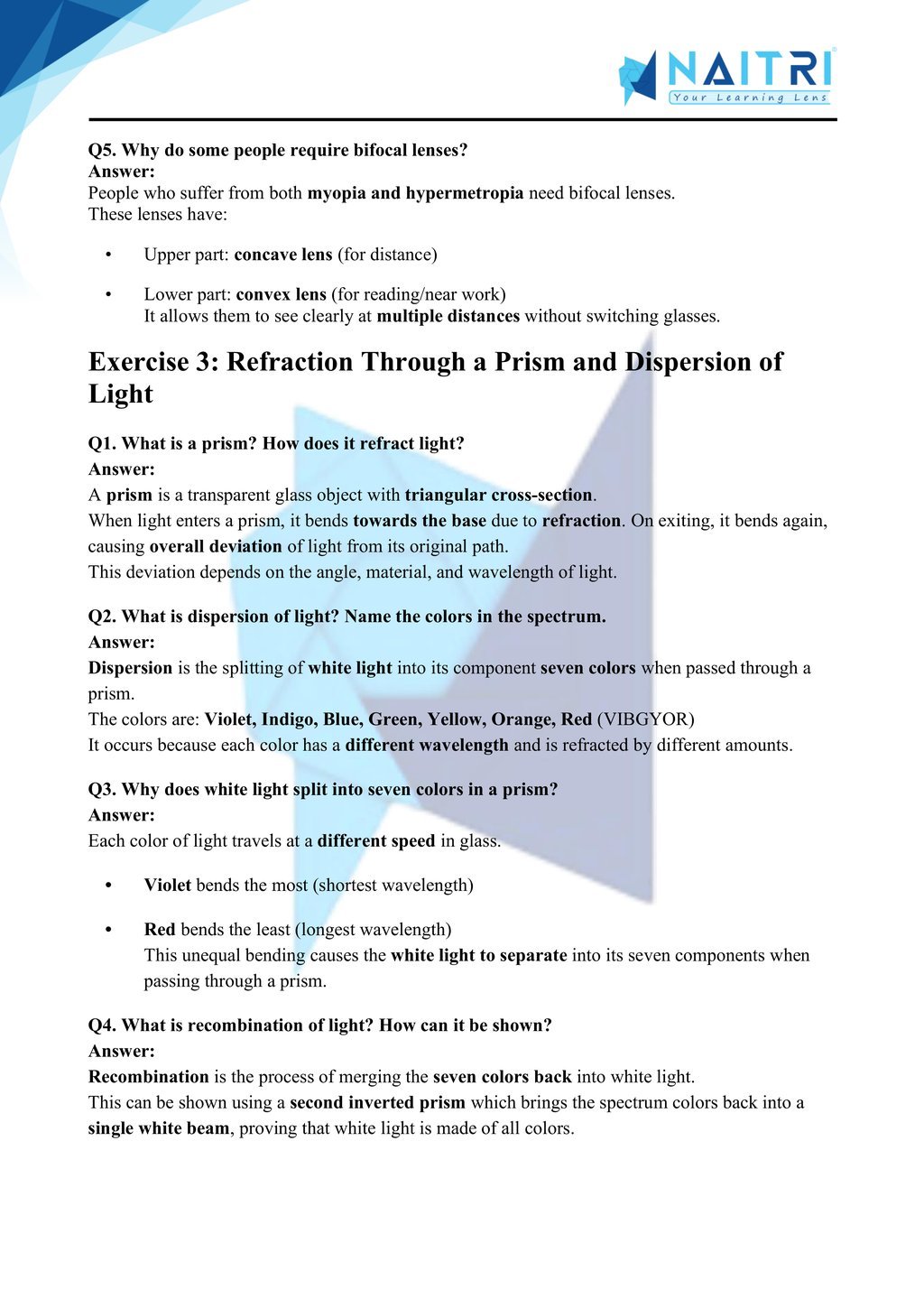
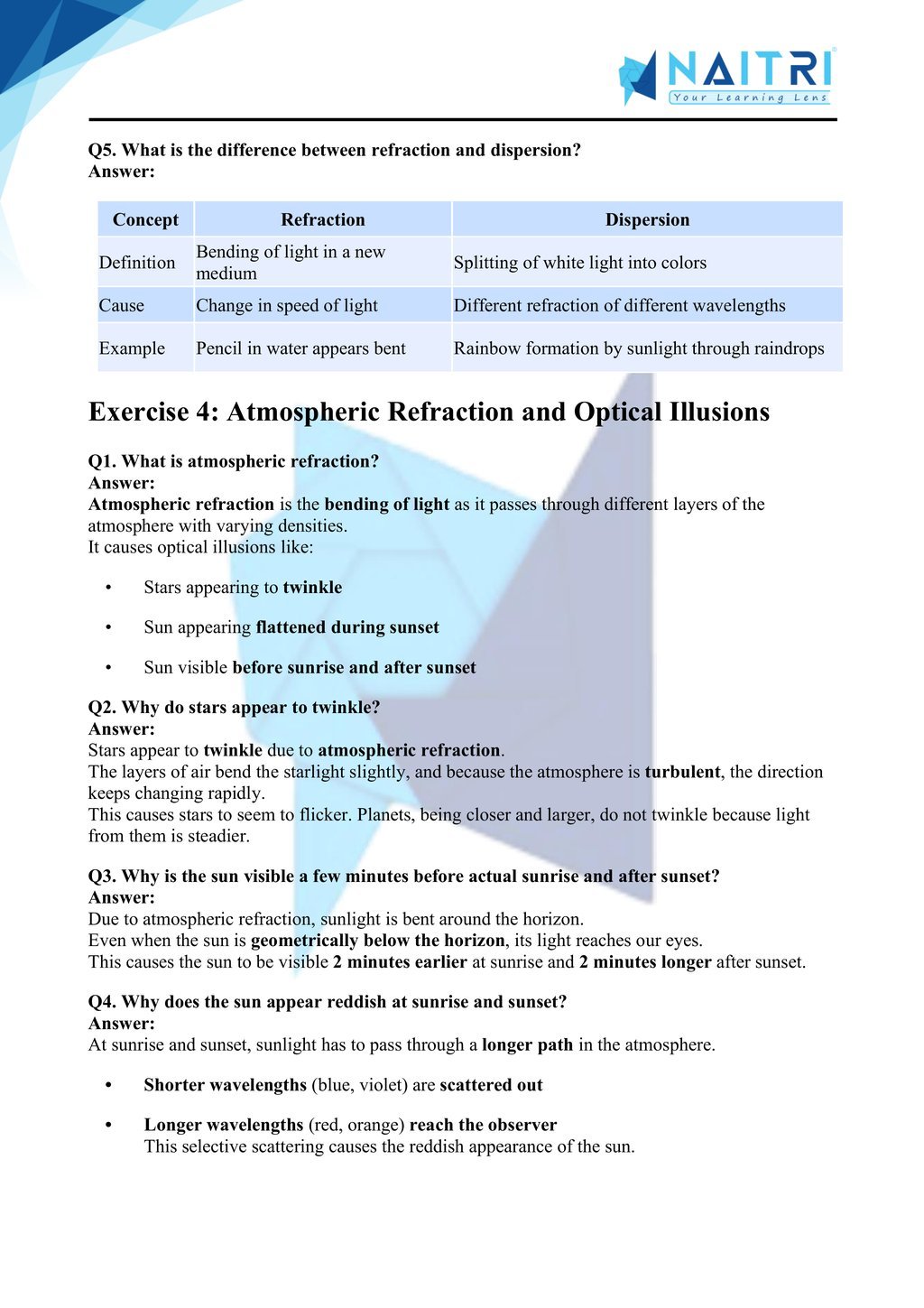
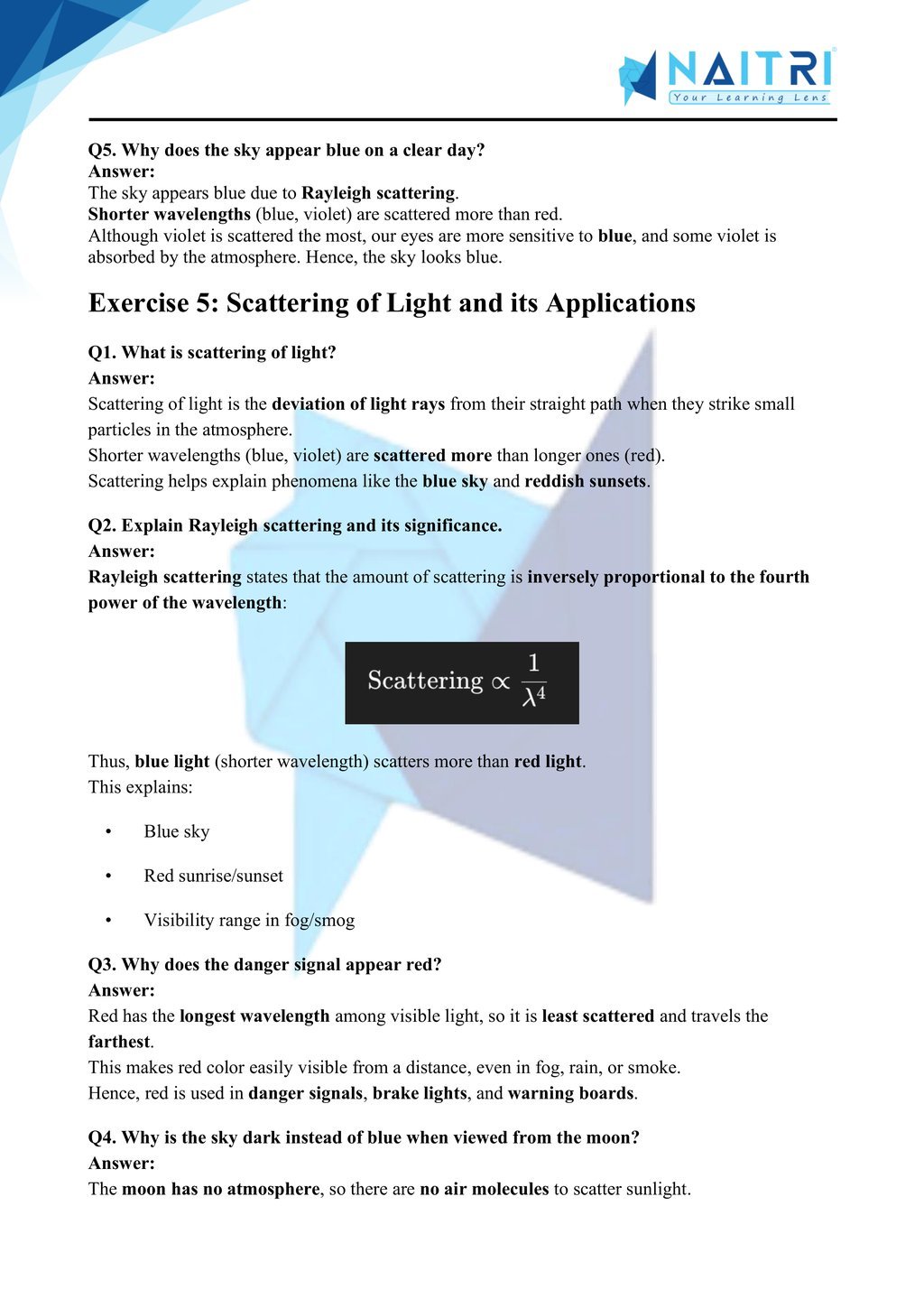
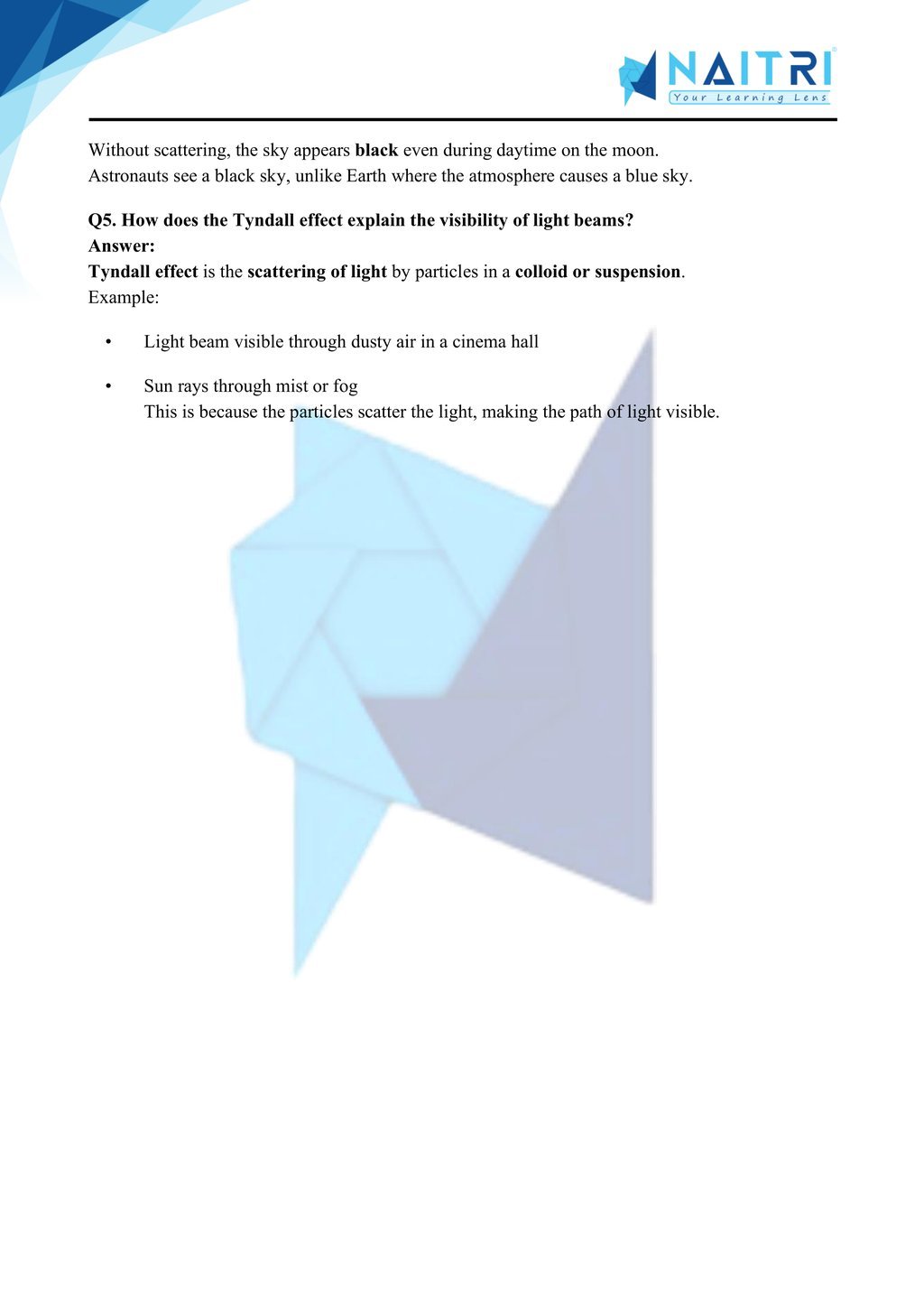
Experience Science Like Never Before – With AR!
Understanding The Human Eye and the Colourful World is now more exciting and immersive! With the NAITRI App, you can explore complex science concepts through Augmented Reality (AR). Experience how we see, how lenses correct vision, and how colors scatter in the sky — right in front of you. Our AR-powered lessons make learning interactive, 3D, and fun, helping you retain concepts better and enjoy every topic.



Visualize . Interact . Understand . The future of learning is here
The Human Eye and the Colourful World – Important Questions with Answers
1. Describe the structure of the human eye.
Answer: The human eye has components like the cornea (outer covering), iris (controls light entry), pupil (light passes through), lens (focuses light), retina (image formed), and optic nerve (sends signals to brain).
2. What is the function of the iris and pupil in the eye?
Answer: The iris controls the size of the pupil, regulating the amount of light entering the eye. It protects the retina from excess light and adjusts vision in different lighting conditions.
3. Define accommodation of the eye.
Answer: Accommodation is the ability of the eye lens to adjust its focal length to clearly focus on nearby and distant objects by changing its curvature through ciliary muscles.
4. Why can’t we see objects clearly when they are very close to the eye?
Answer: The lens cannot become sufficiently thick due to the limited power of accommodation. This prevents light rays from converging properly on the retina, resulting in a blurred image.
5. What is the near point and far point of the human eye?
Answer: The near point is the closest distance at which an object can be clearly seen (about 25 cm), while the far point is the farthest distance visible, typically infinity for normal eyes.
6. Define power of accommodation of the human eye.
Answer: It is the ability of the eye lens to change its focal length by adjusting the shape through ciliary muscles to see objects clearly at different distances.
7. What is a cataract? How can it be treated?
Answer: Cataract is an age-related condition where the eye lens becomes opaque, leading to blurred vision or blindness. It is treated by surgical removal and replacement with an artificial lens.
8. State two main causes of vision defects in humans.
Answer: (1) Improper curvature of the lens or eyeball length causing light to not focus on the retina properly. (2) Weakness or loss of elasticity in the ciliary muscles and lens.
9. Define myopia and give its cause and correction.
Answer: Myopia or short-sightedness is when a person can see near objects clearly but not distant ones. It is corrected using concave lenses that diverge light before reaching the retina.
10. Define hypermetropia and its correction.
Answer: Hypermetropia or long-sightedness is when a person can see distant objects clearly but not nearby ones. It is corrected using convex lenses to converge light rays properly on the retina.
11. What is presbyopia and who does it affect?
Answer: Presbyopia is age-related loss of the eye’s accommodation power, making it hard to focus on nearby objects. It is corrected using bifocal lenses and usually affects older adults.
12. What is astigmatism? How is it corrected?
Answer: Astigmatism is a defect due to uneven curvature of the cornea or lens, causing distorted vision. It is corrected using cylindrical lenses that adjust light refraction in specific directions.
13. Define refraction through a prism.
Answer: When light passes through a glass prism, it bends twice—once on entering and once on leaving—resulting in deviation of light from its original path and forming a spectrum.
14. Why does white light split into colours when passed through a prism?
Answer: White light is made up of seven colours. Each colour bends differently due to varying wavelengths when refracted, causing dispersion into a spectrum from violet to red.
15. What is the order of colours in the visible spectrum?
Answer: The visible spectrum formed by dispersion of white light includes: Violet, Indigo, Blue, Green, Yellow, Orange, Red (VIBGYOR), in order from shortest to longest wavelength.
16. What is dispersion of light?
Answer: Dispersion is the splitting of white light into its constituent colours when passed through a prism. It occurs because different colours have different refractive indices in the medium.
17. Define atmospheric refraction and give one effect caused by it.
Answer: Atmospheric refraction is the bending of light as it passes through layers of air with different densities. One common effect is the apparent bending of a star’s position.
18. Why do stars twinkle but planets do not?
Answer: Stars are point sources and their light undergoes rapid refraction changes, causing twinkling. Planets appear larger and steadier, so their light averages out, avoiding twinkling.
19. Why does the Sun appear reddish at sunrise and sunset?
Answer: During sunrise and sunset, sunlight passes through a thicker atmosphere. Shorter wavelengths scatter out, and longer red wavelengths dominate, giving the Sun a reddish appearance.
20. What is Tyndall effect? Give an example.
Answer: Tyndall effect is the scattering of light by colloidal particles in a medium. It makes light beams visible. Example: Light rays visible through mist or dusty room.
21. Explain the formation of a rainbow.
Answer: Rainbows are formed due to dispersion, reflection, and refraction of sunlight in water droplets. Sunlight splits into colours, reflects inside droplets, and emerges as a circular spectrum in the sky.
22. What is the role of ciliary muscles in eye functioning?
Answer: Ciliary muscles control the thickness of the eye lens. They help adjust the lens curvature for focusing on objects at varying distances, enabling accommodation.
23. How does the eye adjust to bright and dim light?
Answer: The iris regulates the size of the pupil. In bright light, the pupil contracts to reduce light intake. In dim light, it dilates to allow more light in.
24. Why do we see colourful patterns on oil films floating on water?
Answer: Due to interference of light waves. Light reflects off the top and bottom of the thin film, causing different wavelengths to constructively or destructively interfere, producing colourful patterns.
25. Why is the sky blue?
Answer: Due to Rayleigh scattering. Blue light, having shorter wavelength, scatters more than other colours when sunlight interacts with molecules in the atmosphere, making the sky appear blue.
The Human Eye and the Colourful World explains the structure and functioning of the eye, vision defects and their correction, and optical phenomena in nature like dispersion, scattering, and atmospheric refraction. It connects physics to biology and natural experiences like rainbows and the blue sky.
Related Chapters You May Like
Download Naitri App
Easy, Visual Learning — Right on Your Phone
Learn with Augmented Reality! The Naitri app makes CBSE and MP Board concepts interactive and fun — even in low-resource settings. Watch lessons, complete homework, take tests, and track progress — all in one place. Anytime. Anywhere.
Available on








